Author: Tian Hui
During winter in Beijing, the extended range version of XPeng P7 drove two circles of 130 kilometers on the Fourth Ring Road, using only 20% of its battery.
Converted, the XPeng P7, with a nominal NEDC range of 670 kilometers, can actually travel 566 kilometers, with a deviation rate of 15%.
How should we evaluate this achievement?
Normal level.
But what if it was an old car with a total mileage of nearly 170,000 kilometers?
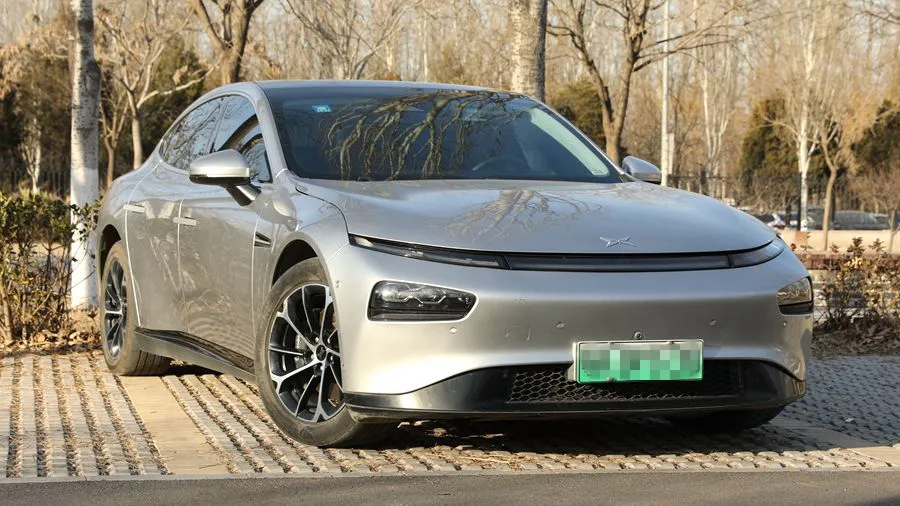
Recently, “Electric Vehicle Observer” conducted a test on a XPeng P7 test car (hereinafter referred to as the “test car”) with a total mileage of nearly 170,000 kilometers.
After XPeng Motors promoted itself as a smart electric vehicle, it was questioned whether internet-born new forces of car manufacturing could produce high-quality products, especially in terms of durability.
This XPeng P7 test car may provide answers to these doubts.
Range: No Obvious Decline
It is well known that the range of electric vehicles drops significantly in winter.
Especially when the cold and poor vehicle conditions in winter are superimposed, the actual range will decrease even more significantly.
The test car is the private car of a XPeng P7 owner, used for daily business travels, often shuttling back and forth in Guangzhou and surrounding cities. The car has been registered for almost a year and has driven nearly 170,000 kilometers.
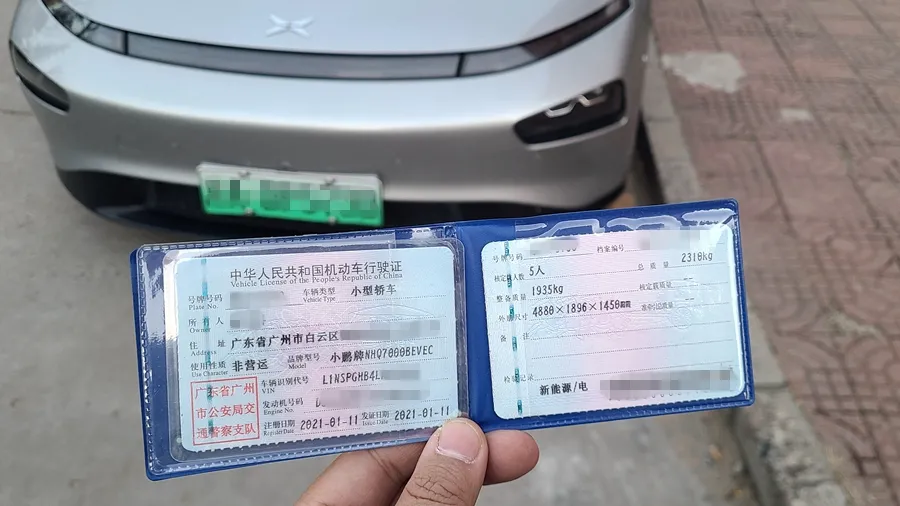
The test car has obvious wear and tear, with wheels and brake pads approaching replacement cycle.
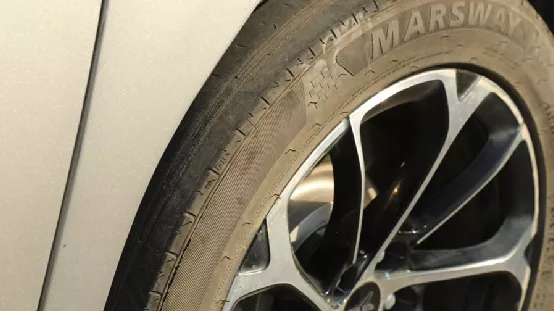
The steel wires of the left rear tire of the test car are visible.
This car may have been involved in a traffic accident during use, hence the phenomenon of “eating tires” in the left rear tire due to accelerated tire wear. The test car is an extended-range version with rear-wheel drive. Combined with poor tire wear, it will increase the energy loss of the electric motor output.
Overall, this winter range test will be a major test for this intensively used XPeng P7.
Due to time constraints, the simplest test method was adopted for this range test. The test was conducted on an urban loop route on the Fourth Ring Road in Beijing. The specific test method was to charge the battery to 95% (Beijing’s safety supervision department requires DC charging stations to automatically stop charging at 95%), and then drive to the entrance of the Fourth Ring Road, restarting the vehicle to begin the test officially.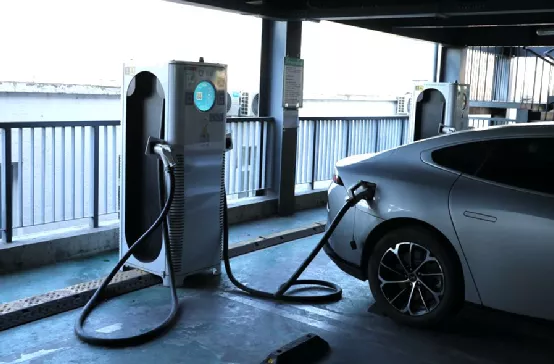
The test route involves driving continuously two laps on the Fourth Ring Road, with a total mileage of 130 kilometers.
On the day of the test, the temperature in Beijing was between 3-13℃. During the test, the automatic air conditioning system in the car was set to 24℃ and the speed was limited to 80 km/h.
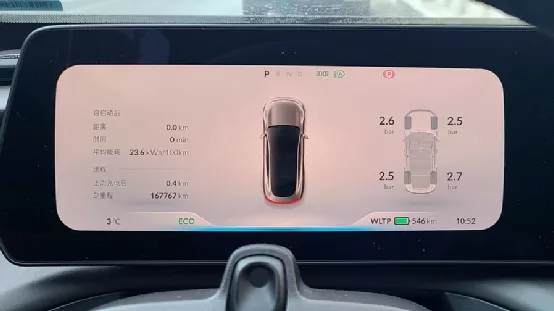
Before the test started, the remaining driving range of the test car, XPeng P7, was 546 kilometers under the WLTP condition and 636 kilometers under the NEDC condition.
During the test, the condition of the Fourth Ring Road was good, with only about 3 kilometers of mild traffic congestion and the rest of the road being smooth.
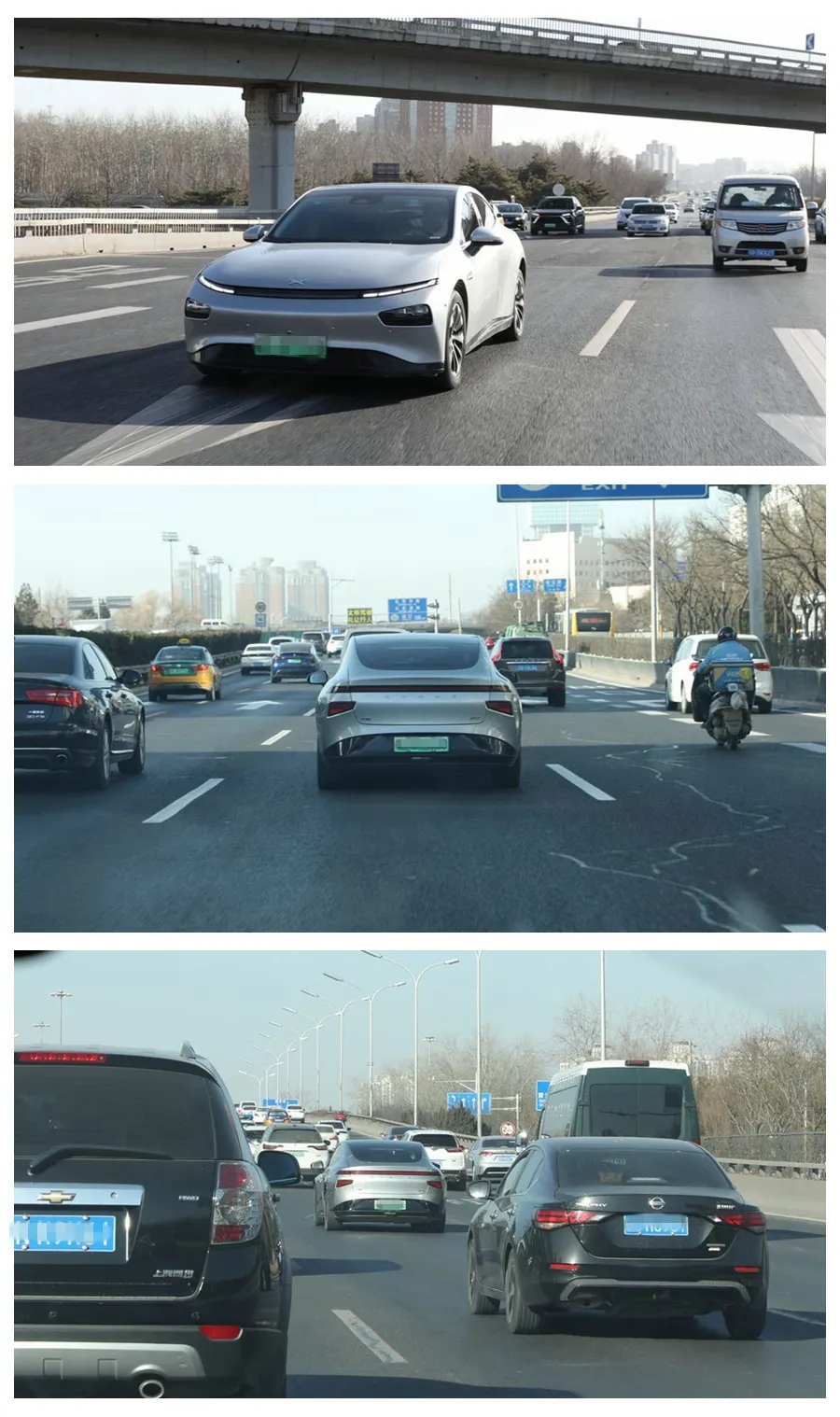
The whole test was conducted using the X-Pedal single-pedal driving mode, and the auxiliary driving functions such as the ACC full-speed adaptive cruise control system and LCC lane centering control were turned off. The remaining driving range was recorded every 20 kilometers.
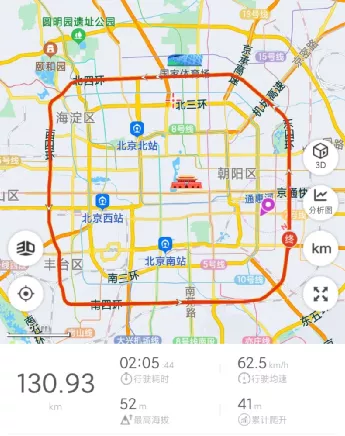
After driving continuously for 130 kilometers for 2 hours, the average speed reached 62.5 km/h.
The recorded driving range results are as follows:
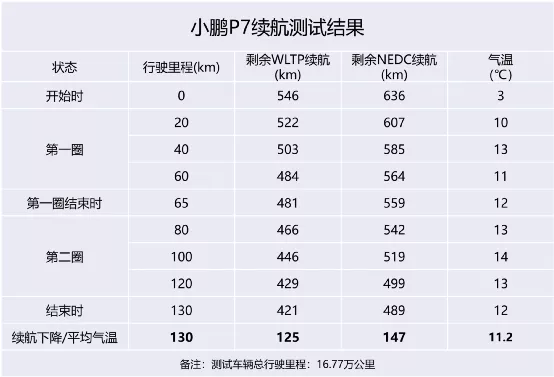
The final test result far exceeded expectations. In the warm winter of Beijing, XPeng P7 test car drove a total of 130 kilometers, and the remaining driving range under the NEDC condition decreased by 147 kilometers. This result was surprisingly good. Generally, electric cars have a decrease of more than 10% in driving range in winter, and the total mileage of the test car is nearly 170,000 kilometers, so it is indeed unexpected. However, this result is not difficult to understand, because the temperature on the test day was high, the air conditioning load was not high, the road conditions were good, and the average speed was close to the ideal driving condition of electric cars. The X-Pedal single-pedal mode also contributed to energy-saving.
Tips: All dashboard data recorded during the test has been uploaded to the background. Reply “P7 test” to view all dashboard data recorded during the test.
After the driving range test was completed, the test car was driven to the same charging station and connected to the charging gun for charging again.Translated English Markdown text with preserved HTML tags:
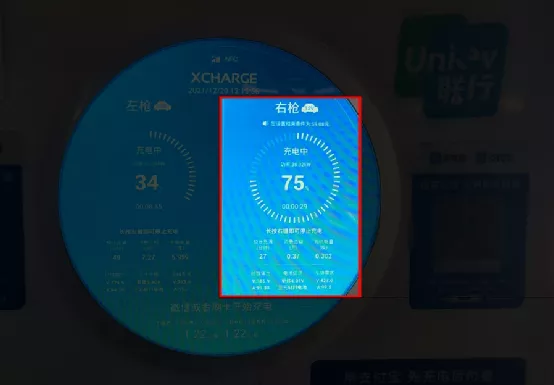
After connecting the charging gun, the charging station displayed 75% remaining battery power for the test vehicle, which had used 20% of its energy to travel 130 kilometers.
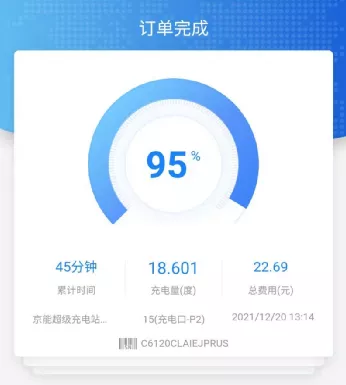
After stopping automatically when charged to 95%, a total of 18.601 kWh was charged. Based on this, and including the energy loss of the charging station, the final energy consumption for the XPeng P7 test vehicle was calculated to be 14.3 kWh/100 km.
This test vehicle is the long-range version with a power battery capacity of 80.9 kWh. Based on this energy consumption calculation, the XPeng P7, which has a total driving distance of nearly 170,000 kilometers, has an actual range of approximately 566 kilometers, which is a deviation of about 15% from the NEDC standard range.
Before the range test, we also conducted a low-temperature charging test on the test vehicle. After leaving it idle overnight in the winter of Beijing, we conducted a charging test at a public charging station, whose maximum single-pile charging power reached 180 kW.
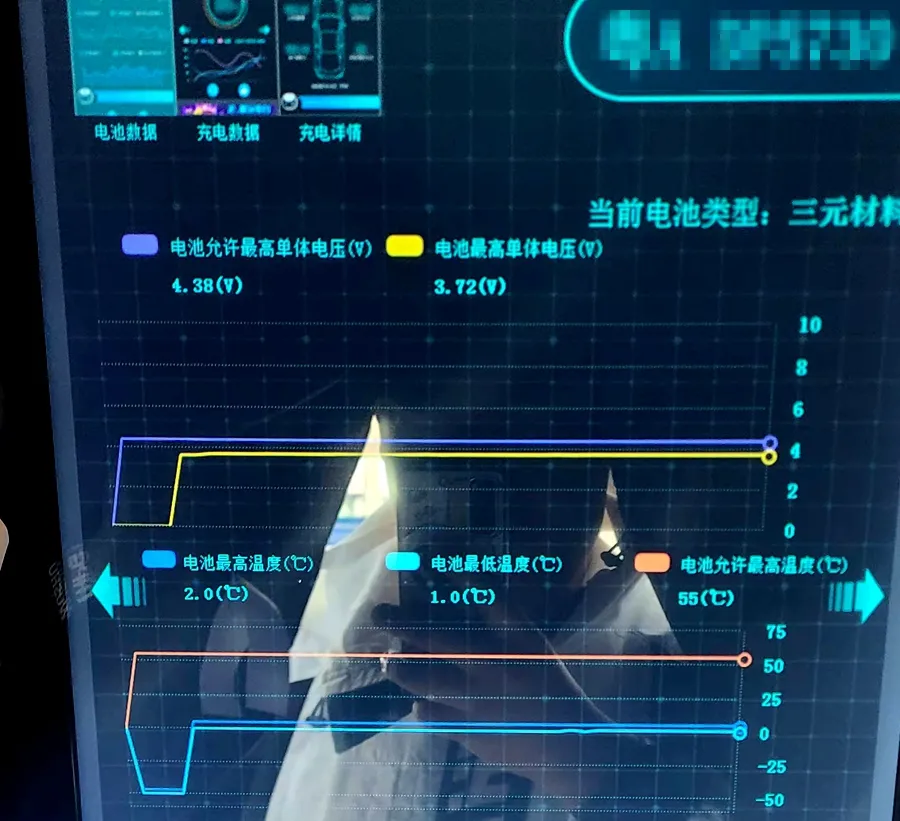
At the beginning of the test, the power battery temperature of the test vehicle was only 2℃. During subsequent charging, the overall charging power could be maintained at above 40 kW, and at its highest, it could reach 61 kW.
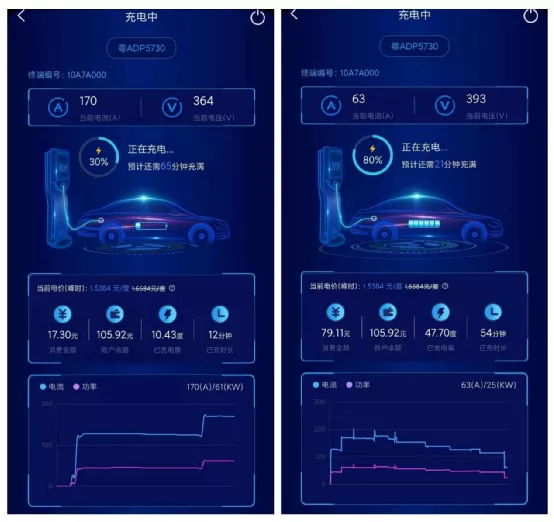
The charging time for the XPeng P7 test vehicle from 30% to 80% charged was 42 minutes, which is shown in the official specification table. Under normal temperature conditions, the charging time from 30% to 80% should be more than 33 minutes. This shows that when the power battery is at a low temperature, the change in charging speed of the vehicle after intense use is not significant.
Through range and charging tests, it can be seen that the performance of XPeng Automobile’s power battery management system, vehicle thermal management system, and power battery durability are good.
Based on the above tests, after nearly 170,000 kilometers of use, the range performance of the XPeng P7 is still quite reliable, and the actual range performance is basically the same as that of the WLTP standard range. In the charging test, the temperature of the power battery was well controlled, and the charging speed during cold car charging was within 10 minutes of the official new car data.
Car Condition: Overall Well-Maintained, Easy-to-Wear Parts Not Updated on Time
The vehicle has traveled nearly 170,000 kilometers in one year, which is approximately equivalent to the driving distance of an ordinary private car for more than 10 years.
How is the durability of the car after such a long distance? That is also the focus of this test.# Observations on the Test Car
No problems were found in the mechanical components, such as oil or shock absorber leaks, during the observation of the test car. All the internal components were found to be in healthy condition.
Typically, when a vehicle has traveled a certain distance, the bumps and vibrations during driving will cause the exterior parts of the vehicle to become loose, and the gap between various components to increase.
During the test, a micrometer was used to measure the gap between the front hood, door panels, and trunk lid of the XPeng P7 test car. The measurement results are as follows:
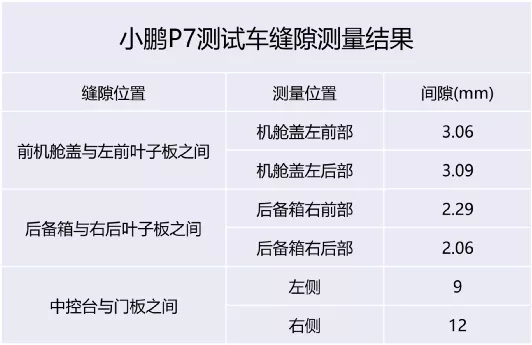
From the test results, the gap measurement results of the XPeng P7 are not significantly different from those of a new car. The gaps at the joints of the exterior panels are still relatively tight and uniform.
In terms of the interior parts, there are visible signs of wear and tear on the leather seats, such as wear marks on the seat cushions and backrests, especially in the seating positions of the driver and front passenger.
However, wear on the seat backs of the front passenger and rear seats is not severe, although there are signs of wear on the leather surface of the seat cushions.
Overall, the leather surfaces of the seats are within the normal wear and tear range. It is worth mentioning that the seat fillers have not sagged, and the overall support is good.
When the vehicle has traveled a long distance, the overall NVH (noise, vibration, and harshness) performance of the vehicle will change the most.
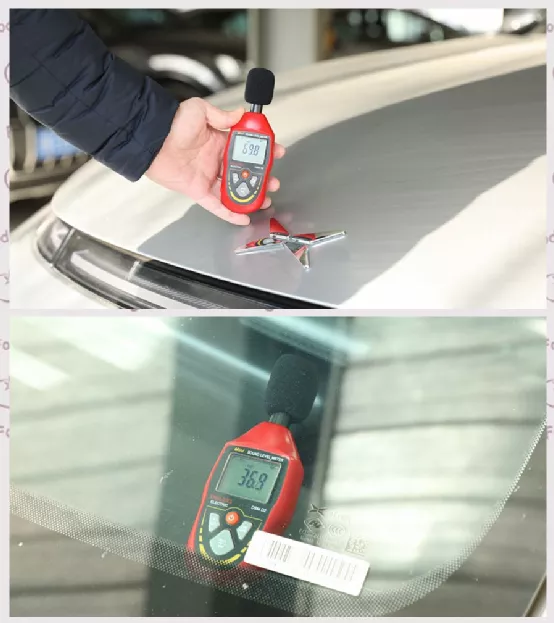
A decibel meter can be used to test the internal and external noise of the vehicle when it is stationary. With an external noise level of around 69.8 decibels, the internal noise level of the XPeng P7 with a total mileage of nearly 170,000 kilometers was measured at 36.9 decibels, proving that it still maintains a high level of NVH performance when stationary.
Upon closer inspection, the sealing strips at each door of the test car were not significantly worn, which should be one of the main reasons for the good NVH performance when stationary.
In daily use, the degree of tire wear has a relatively large impact on the overall dynamic NVH performance of the vehicle. If the tires are severely worn, it will affect the NVH performance of the entire vehicle and pose a safety risk, so dynamic NVH performance was not tested in this test.After long-term use, whether the intelligent configuration of smart electric cars will encounter lagging issues like mobile phones is the focus of this test.
The intelligent system in XPeng P7 test car uses Xmart OS operating system and supports OTA feature for the whole car. During the test, the software version number was 2.6.2.
Currently, all models of XPeng P7 use Qualcomm 820A vehicle system chips. XPeng P7 test car still has fast response speed in wake-up voice interaction assistant “Xiao P” and dragging the map without obvious lagging. The recognition rate and fluency of continuous voice input are also high.
Make cars first, then make them intelligent
With nearly 170,000 kilometers of total mileage, XPeng P7 has proven its quality as a flagship sports car from XPeng.
After conducting range tests, observing products’ quality, and taking measurements, the quality of XPeng P7 test car is equivalent to that of a new car and remains practical and reliable. The winter range is still within the normal range, and the intelligent features keep upgrading. Apart from the typical wear and tear of vulnerable parts, the overall performance remains at a high level.
Data gathered from the test should change many people’s doubts about the new forces behind car manufacturing.
Traditional car manufacturers indeed possess more experience in large-scale production. However, the factories, equipment, manufacturing robots, management methods, and more used by new forces are the latest technology solutions, which are built on top of years of experience in the Chinese automobile industry.
In October 2021, the production qualification for XPeng Smart-connected Technology Industrial Park in Zhaoqing was set. XPeng has also become one of the new forces’ few brands to own production and self-built factories, with complete chain integrity from research and development, manufacturing, sales and operation, and after-sales service guarantees.
Therefore, XPeng is not just “making cars with PPT.” Instead, it aims to create high-quality products that are comparable to mature brands.
It should be noted that XPeng is at the forefront of new forces in car manufacturing. Even though it leads in intelligent features, it has not given up striving for product quality and durability. Instead, XPeng has gradually established itself as the benchmark for “Peng Quality” by focusing on manufacturing excellent cars and deepening auto intelligence.
In the future, XPeng will continue to lead automobile intelligence in the field of new energy by insisting on delivering high-quality and high-reliability products to users.
This article is a translation by ChatGPT of a Chinese report from 42HOW. If you have any questions about it, please email bd@42how.com.